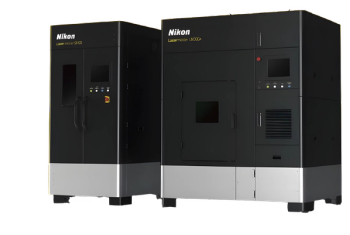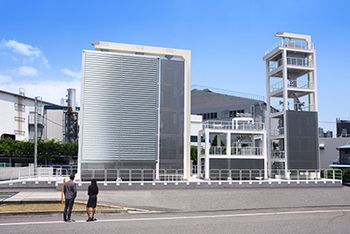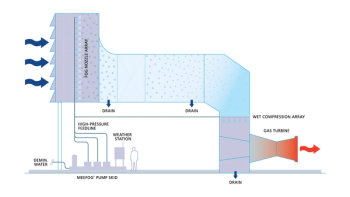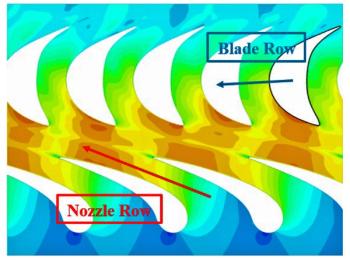
- July/August 2021
Hydrogen combustion
New DLE combustor addresses NOx emissions and flashback.
BY JENS DICKHOFF, ATSUSHI HORIKAWA, AND HARALD FUNKE
A transformation of the energy market is ongoing. Renewable energy rose from 5,451 terawatt hours (TWh) in 2000 to 9,824 TWh in 2019. But there is a need for large-scale energy storage to satisfy power demands when solar and wind are offline.
Hydrogen is regarded by some as the green energy carrier of the future. But it faces technical and regulatory challenges. Gas turbines operating on some or 100% hydrogen will play a key role in the transition. They are a proven technology, provide electricity and process heat, and can be sized from kilowatts up to several hundred megawatts.
However, hydrogen combustion is not entirely straightforward, because of its extreme flammability range and flame speed that can lead to flashbacks. It also requires the right combustion technique to keep NOx production low. Wet NOx combustion is the current method used, where water or steam is injected into the combustion chamber to reduce the combustion temperature. The water/steam must be free from impurities. While reducing NOx emissions effectively, this approach is still not environmentally sound or efficient.
Dry low Emission (DLE) technology is likely to be the answer. But the combustion process means that engineers must think outside the typical lean combustion-low NOx box to develop new techniques.
To date, good progress has been made in achieving 30% volume H2 with only minor adjustments to the combustion chamber. But the pathway to 100% H2 is far from easy. 30% volume equates to 5% mass or 11% of energy when mixed with methane. Even 60% volume means around 15% mass. These fractions are acceptable for today when large amounts of H2 are anyway unavailable. But they are not sufficient for decentralized reconversion plants.
Another factor to consider is that at typical fuel-air ratios (e.g. Lambda 2.3) the turbulent flame speed starts to rapidly increase at around 35% to 40% volume H2 and reaches its maximum at around 70%. At that point, the danger of flashbacks for premixed combustors is extremely high. When the flame travels upstream and anchors in an undesired region such as a small step, it can quickly destroy parts of the burner structure.
Increasing the air cross flow velocity is also problematic. The pressure drop of the combustor section would increase, reducing overall machine efficiency. Additionally, burner geometries are not always perfectly smooth and typically feature small steps where flow can recirculate and autoignition can take place. This can trigger flash backs and represents a random phenomenon. Therefore, it is difficult to detect in tests since all burners are slightly different and manufacturing process quality control plays an important role here, which also has an impact on component price. Finally, the flow velocity on the wall is zero by definition. In contrast to methane, hydrogen is more prone to boundary layer flashbacks due to the higher flammability range and flame speed.
THE REAL HYDROGEN CHALLENGE
The real challenge, therefore, is how to burn greater than 90% volume of hydrogen at low emissions, without a water/steam admixture, and to fulfil safety, emission, pressure drop, and lifetime requirements inside the gas turbine. The only technology on the market bringing these points together is called Micromix (MMX) combustion.
In research and development since the late 1980s by Aachen University of Applied Sciences (AcUAS, FH Aachen), it has been the subject of many collaborative project s. These have primarily involved B&B-AGEMA and Kawasaki Heavy Industries (KHI). The basic ideas behind the concept are:
- NOx suppression by residence time reduction.
- Jet-in-cross-flow mixing for flashback safety.
To suppress NOx formation, one can either lower the flame temperature or reduce the residence time of fuel/air inside the high temperature zone of the flame. NOx molecules can only form under certain fuel/air conditions and high temperatures. The best course is for N and O molecules to reach colder zones behind the flame before they undergo a chemical bond.
Pure hydrogen cannot burn. A diffusion flame is consequently flash-back safe whilst pre-mixed flames will always carry risk. By the jet-in-crossflow mixing process, rapid premixing lowers the average flame temperature. If the flame travels towards the H2 injector, the mixture becomes too rich to burn and is forced to travel back to its intended position without damage to burner components.
Early designs proved out the general concept and highlighted issues to overcome. By incorporating computational fluid dynamics (CFD) through the help of AcUAS and Kawasaki, this combustor technology was introduced into the Kawasaki M1A-17 gas turbine (2 MW).
Reactive flow simulations were performed in Siemens Simcenter STAR-CCM+ to study aerodynamic flow parameters and the combustion structures (flame shapes). The aim was to find the optimal design and length of the flame to ensure low NOx combustion and reduce the number of injectors. Simulations included reactive chemistry to predict the flame shape, size, and temperature signature. Siemens Digital Industry Services provided model tuning.
As a result of this research, AcUAS and B&B-AGEMA developed the fourth and fifth generation MMX combustor. It includes a new flame shape with very low NOx properties, based on CFD simulation, which was never considered before. The team developed a prototype burner.
An air-cooled borescope was developed to visualize the MMX flames inside the can combustor under full pressure. This optical monitoring device is equipped with an infrared or white light endoscope which can be inserted into the combustor.
The head is located downstream of the flames and exposed to the highest temperatures (>1300°C). This assisted in verifying combustor performance.
The overall target was to have less than 35 PPM NOx at 100% hydrogen from 50% to 100% load, with low NOx values at part-load operation as well. Additional requirements were stable ignition, no flashback, and an acceptable pressure drop. With an intensive program of CFD simulation, design optimization and benchmark validation on low- and high-pressure test rigs, an MMX burner design successfully met these targets.
The recent focus has been on implementing this technology into industrial turbines. In 2020, the Japanese New Energy and Industrial Technology Development Organization (NEDO) and KHI announced a successful demonstration of the first DLE 100%-hydrogen-fuelled gas turbine under commercial operating conditions in the port of Kobe, Japan.
Articles in this issue
about 4 years ago
Keep it simpleabout 4 years ago
Noise levels at energy plantsabout 4 years ago
Vendor spotlight: Waukesha Bearingsover 4 years ago
Deep compressionover 4 years ago
Cybercrime surge: how controls vendors are respondingover 4 years ago
Infrastructure billover 4 years ago
Gas turbine sales remain flatover 4 years ago
Turbo Tips: Factors impacting compressor surgeNewsletter
Power your knowledge with the latest in turbine technology, engineering advances, and energy solutions—subscribe to Turbomachinery International today.





